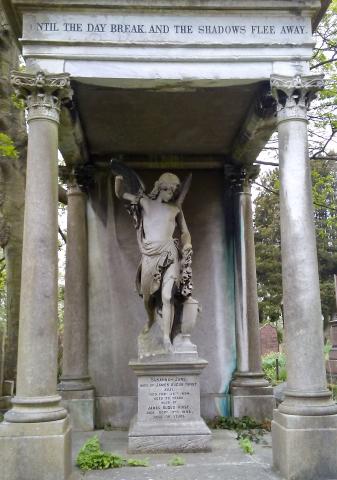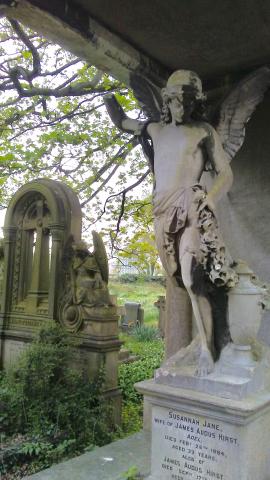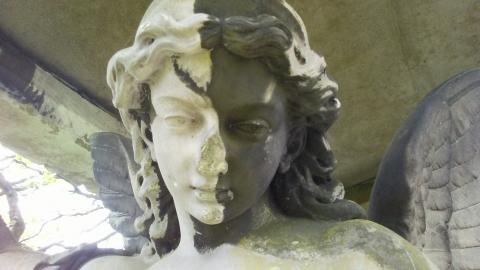The Dark Angel of Adel

At Adel Churchyard in Leeds is an enchanting sculpture of an angel. I’ve no doubt it is nothing at all like the terrifying cherubim and seraphim of the Biblical narratives, but as art it is stunning. And disturbing. It is beautiful and yet chillingly horrible. Some defection in the white stonework has caused it to become partially stained- right down its face. I understand it might have inspired a Dr Who episode, but not being a fan, I cannot vouch for this. If I did want inspiration for a science fiction/fantasy race of monsters, this angel would certainly suit my purpose. Its hand has broken off, but this makes it more fearsome rather than less. Was it clutching a weapon with which to smite someone, or a posy of flowers with which to mourn the dead?

The angel epitomises two views of human nature, expressed by Pelagius and Augustine in the fifth century. Whereas Pelagius thought us essentially good, but liable to make bad decisions and mistakes, Augustine rightly considered us essentially bad, barely discharging dim glimmers of our original state. Pelagius’ views are shared my most religions and philosophies whereas Augustine, for his faults, is closer to the Biblical record. This sculpted angel, though enchanting, is corrupted and spoiled, offering useful material for the script of a nightmare. Even if Pelagius’ more positive view is correct, logically we would still be spiritually rotten. If you doubt this, try adding a half-dozen tiny grains of salt to your next tea or coffee: a little spoils a lot. The gospel declares the Christian righteous in spite of her hideous warping and then transforms her, gradually, to her lost state of spiritual beauty. We cannot fully understand this, however, until we first concede our depravity:
The Lord saw that the wickedness of man was great in the earth, and that every intention of the thoughts of his heart was only evil continually.
Gen. 6:5

- Log in to post comments


 Sunday Worship 10.45am & 6.00pm
Sunday Worship 10.45am & 6.00pm